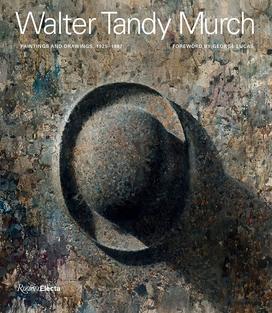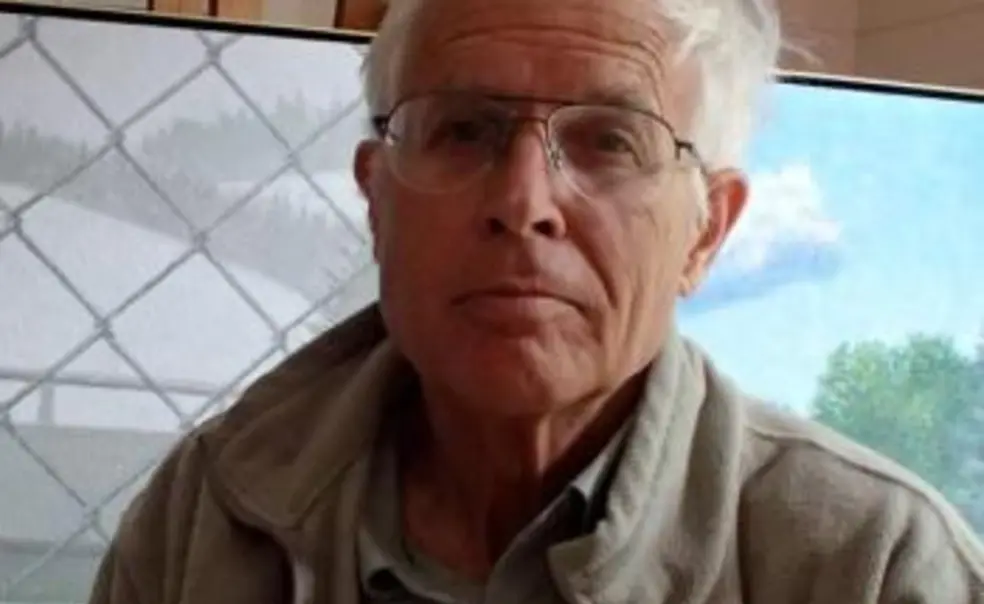Winslow Myers ’62 and Others Showcase Artist Walter Tandy Murch
The book: For this first complete monograph of the artist Walter Tandy Murch, experts collaborated on a collection which includes Murch’s paintings and illustrations, and essays celebrating his iconic style. The impressive displays throughout Walter Tandy Murch: Paintings and Drawings, 1925-1967 (Rizzoli Electa) make up the bulk of more than 300 pages showcasing the mix of magic realist, surrealist, and realist styles in his still-life paintings of everyday objects and mechanical devices. Readers will gain a full picture of the prominent midcentury artist through the eyes of those who appreciate his work.

The authors: Winslow Myers ’62 is a Maine-based landscape and portrait painter who works in acrylic on canvas. He studied art under Walter Tandy Murch while at Boston University. Walter Scott Murch, the artist’s son, is an Oscar-winning film editor, director, writer, and sound designer. Robert Storr is an acclaimed artist, critic, and curator who is currently dean of the Yale School of Art. Judy Collischan is an art historian and Murch scholar who wrote her doctoral thesis on the artist in 1972. She is also a lecturer, professor of contemporary art, and the author of several books about art including Lines of Vision: Drawing by Contemporary Women. George Lucas is a film director, screenwriter, entrepreneur, philanthropist, and a major collector of Murch’s art.
Excerpt:
“To Create, I Will Recreate”
By Winslow Meyers
Walter Tandy Murch was appointed head of the graduate program in art at Boston University in 1961. I first caught sight of him walking steadily down the hallway holding in one large fleshy hand, as if it were a paper plate, an iron manhole cover that must have weighed well over a hundred pounds—presumably intended as a possible motif either for his students or for himself. His authority as a teacher came first of all from the strength of his art. Murch was his art. He once said, “As my hand reaches out to touch the door of my studio, I literally feel myself becoming what is inside.” His charisma emerged from his ability to convey to students that the excitement of creative work was the central issue, something open to us from the outset. While it was obvious that his lifetime of involvement with art meant that he existed on a plane very different from our own, a sense remained that teacher and student could share the adventure of taking a leap into the unfamiliar that is required of authentic art-making. He would, for example, borrow an incomplete painting from a student and simply keep it on view in his office for a few days, implicitly affirming a moment of creative daring.
The visual arts program at the university was nationally recognized for its emphasis on boot-camp fundamentals. Murch took it for granted that we would master foundational skills and that these would be subsumed into larger issues. This freed him, especially at the graduate level (his duties included teaching a few sections of undergraduate drawing), to concentrate on encouraging students with matters of expression and identity. Even if he only spoke briefly to us in class, his emphatic, carefully chosen words were often liberating. What he liberated in us above all was the pleasure of letting the medium of paint or charcoal take over as it had in his own work—something he himself had first experienced at the prompting of his teacher, Arshile Gorky, in the 1930s. He reliably made observations that would be hard to imagine coming from the mouth of any other artist. As one way to release the tension of creative endeavor, he would repeat, “To hell with it, it’s only a painting.” On the subject of letting paint take on a life of its own, he would half-humorously remind students to make sure their paintings were as interesting as their palettes. Speaking of the achievements of a distinguished fellow painter, he reminded a group of students, “Don’t forget, he did it—for you,” by which he seemed to mean that the making of visual art, like a musical performance, could be a conscious gift to others, not just a radically self-centered activity.
When he was asked to jury exhibitions around the country, his sole criterion seemed to be excellence in whatever form it might take. He helped bring to B.U. an exhibition of Jean Dubuffet, an artist who could not have been more unlike Murch. This transcendence of dogma informed his teaching and allowed his dialogue with students to include enthusiastic references to a broad swath of artists across mediums, from Marcel Duchamp and Johannes Vermeer to Albert Camus and Aldous Huxley. The kindly support he radiated included more than a hint of veiled challenge. He would flatly assert that 90 percent of the art being made at any given time was terrible, the clear implication being that much as he might empathize with you as an individual case, you were stuck with a 10 percent chance, at best, of finding your way beyond mediocrity.
His comfort with himself and with others made it safe for something more formidable in him to show itself, almost a ruthlessness, the character equivalent of the physical strength demonstrated by his ease carrying the manhole cover. In conversation, he would gesture with palm downward, his middle finger pointed toward a student, saying, “So you want to be an artist? Then go ahead and do it!” When one of us indulged in a particularly pretentious bit of existential rue, he thrust the same middle finger into the student’s deflated chest and said vehemently “Stop suffering!” Murch defined his teaching style with the same modesty—and revealing honesty—he conveyed when he spoke about his painting: It is a curious thing to be a teacher. I think you have to be a teacher for at least 10 years before you know what is taking place—that you really aren’t teaching at all—you just exist, stand there, and they see you as an example, they use you as a sort of person to bounce their ideas on, and they say to you, “Am I all right,” and they, in fact, teach themselves. The thing that is done in the first half-hour, it almost makes me weep—I mean, beautiful things—but they don’t know how to carry on, they’re afraid, immature. If I had one message, I would say, “Go ahead! It must be done.”
By the notion of the teacher as example, Murch meant an example as a working artist, not as a charismatic art personality with an academic or technical axe to grind. He was implicitly asserting that it is impossible to teach creativity—except by example. The paradox was that his acceptance of this reality made him all the more effective as a teacher. Murch was fortunate that a gallerist as discerning as Betty Parsons had recognized his potential in the early 1940s. Her steady support allowed him to exhibit every few years in a milieu that brought him into fruitful contact with the leading nonobjective artists represented by the gallery, including Jackson Pollock, Barnett Newman, Franz Kline, and Ad Reinhardt. A number of his students made repeated visits to what would be his final exhibition at Parsons in 1966 and came away increasingly enthralled. When a major retrospective of seventy of his paintings and drawings, organized by the Rhode Island School of Design’s Museum of Art, arrived in the gallery at B.U., it was confirmation that Murch had waged and won a titanic lifetime struggle, resulting in a level of recognition that would finally allow him more time to exercise his hard-earned mastery.
His final show at Parsons indicated that he was poised to pursue the implications of his own discoveries. He had told his wife, Katharine, that the retrospective was a kind of watershed that allowed him to think about a further leap, even about a new direction altogether. 5 When his work came fully into its own, in the mid-1960s, the high moment of heroic Abstract Expressionism was already passing, while a disconcerting conflation of art, fashion, and celebrity in Manhattan had begun to accelerate. Sailing steadily against this tide of entropy, Murch continued to make paintings and luminous “painted drawings” that reached—and still reach—the condition of timelessness valued in the work of the very greatest art historical figures. The combination of his example and his encouragement represented a pole star of creative integrity. He had done it in his way, so it became possible that we could do it in ours. His radical renewal of the venerable genre of still life suggests that some invented cate - gory is called for to describe it—still life–as-mindscape? The Murch effect is too subtle and unique to be easily named. Like his work, Murch himself radiated an aura—an antic bemusement with life’s absurdities that indicated hard-won wisdom.
This aura was only reinforced by his mild speech impediment, almost certainly caused by his parent’s efforts to change his natural left-handedness in early childhood. Remarkably, he had also been left almost totally blind in one eye as the result of an accident when he was twelve. A man with monocular vision, who had been forced to use the hand that nature did not intend, managed to carve out some of the most precisely articulated spaces in modern painting. Profound creativity often thrives under adverse conditions, including that of being thrust by circumstance into a fruitful solitude—for Murch, the routine, continued for decades, of painting at night. His personal challenges only stimulated him to become an award-winning commercial and fine artist, an attentive husband and father, a charismatic and admired teacher, and an art juror of impeccable integrity
Published by Rizzoli Electa. Copyright © 2021 JAKS Productions, Inc.
Reviews:
“This overdue monograph is certain to renew interest in Murch.” — Lance Esplund, Wall Street Journal












No responses yet